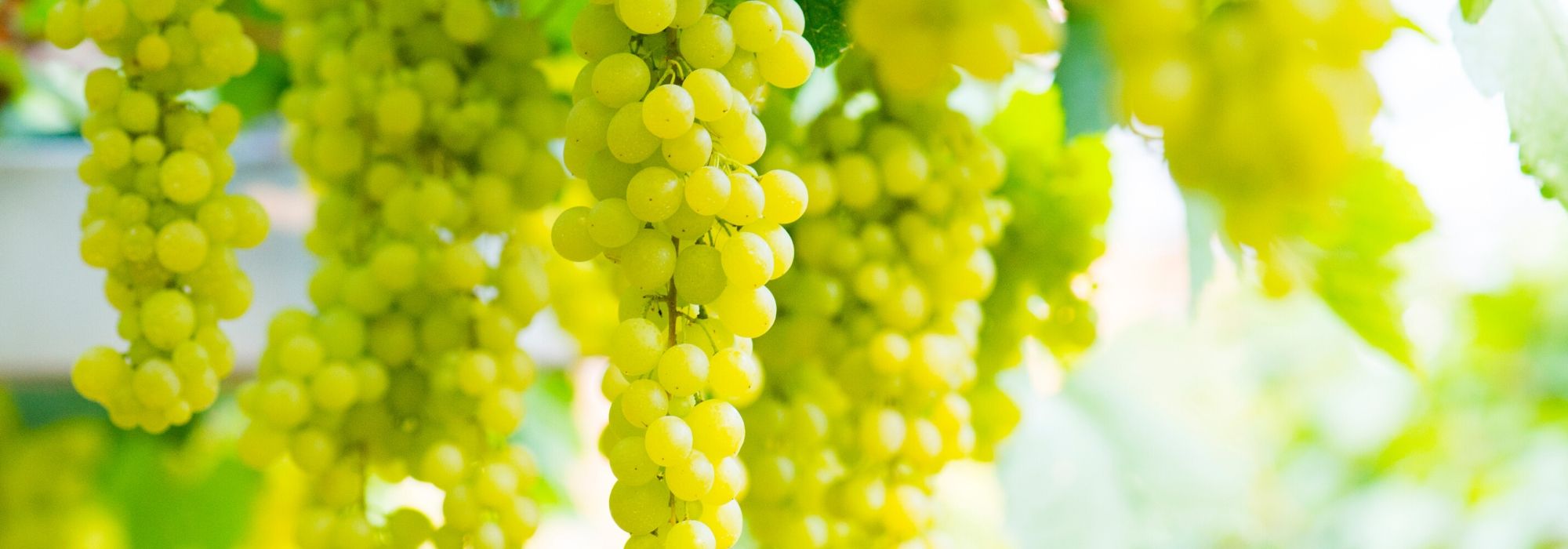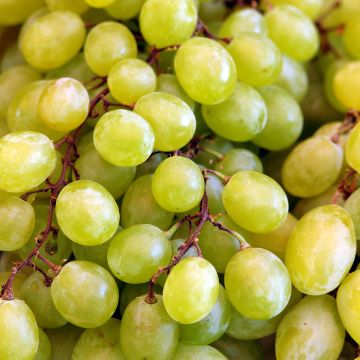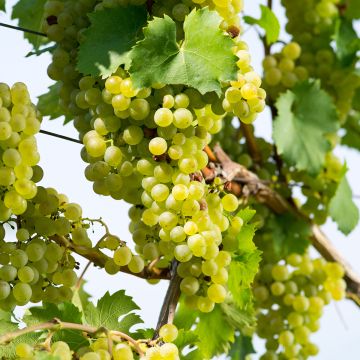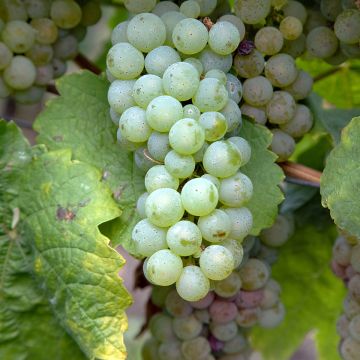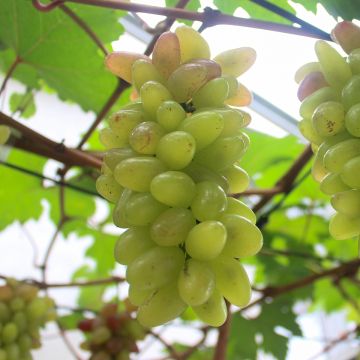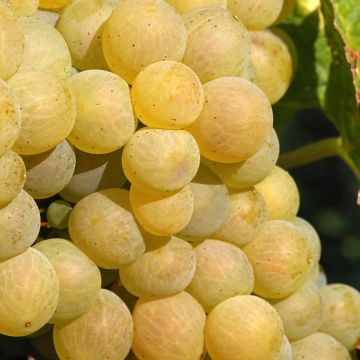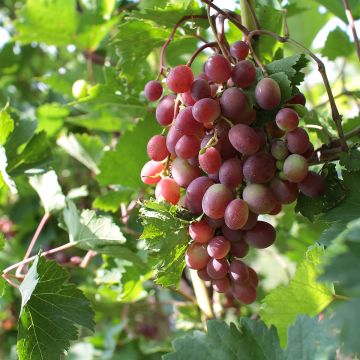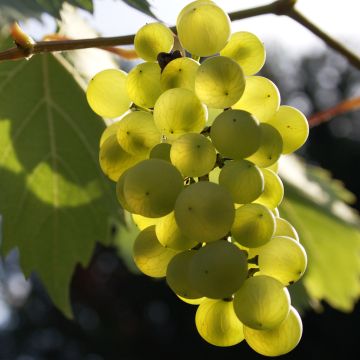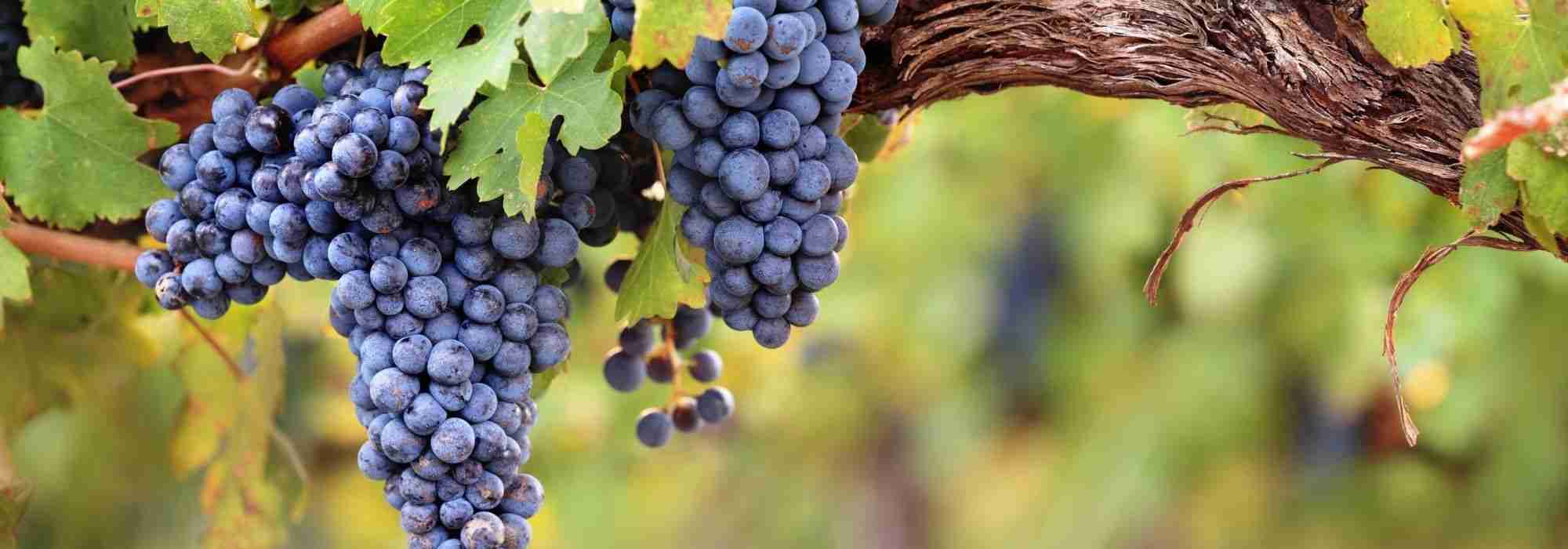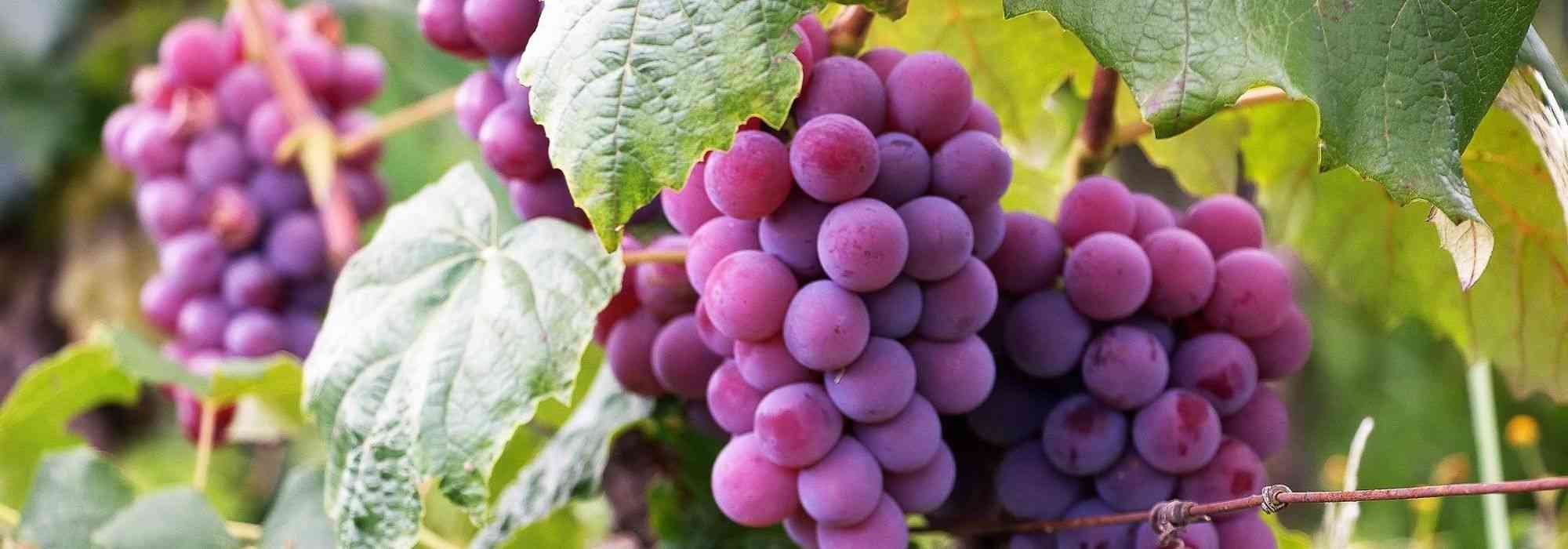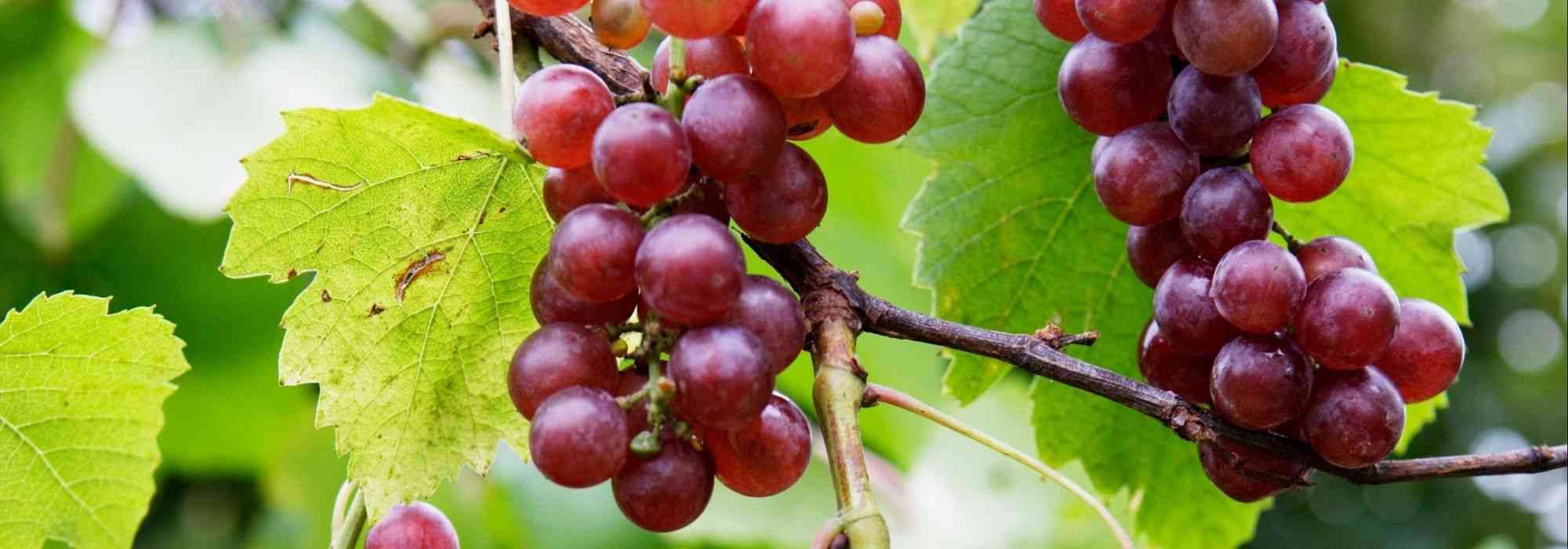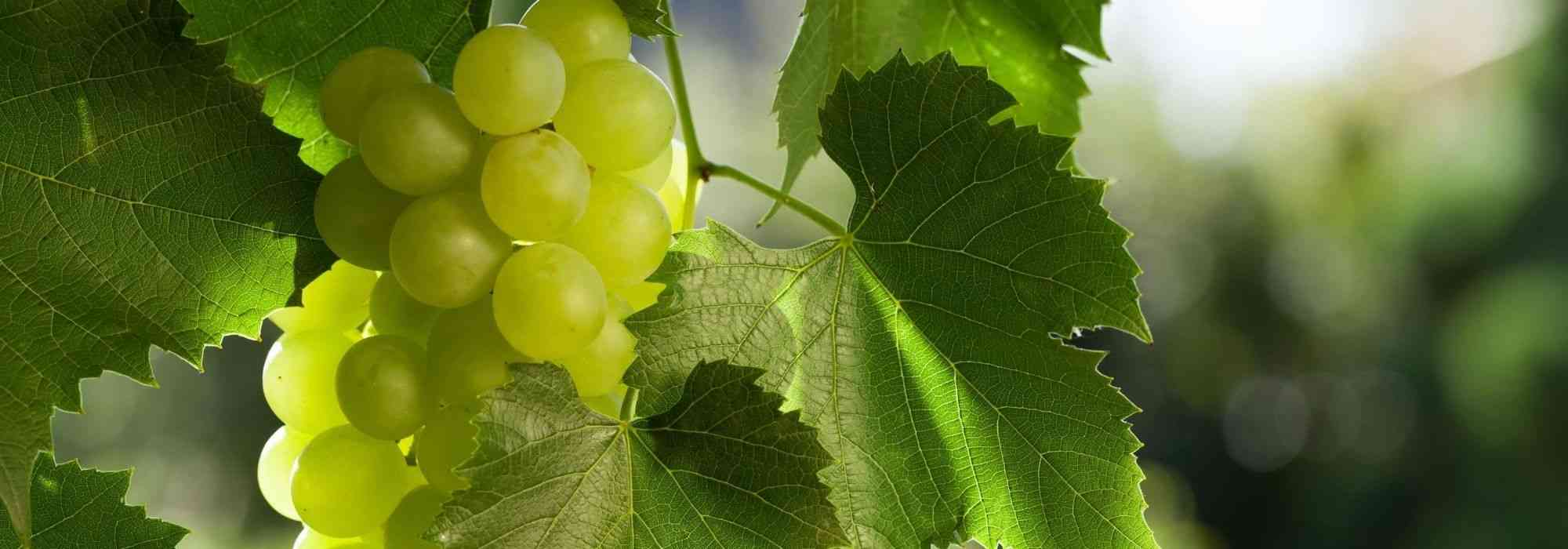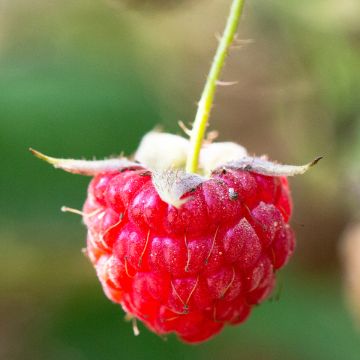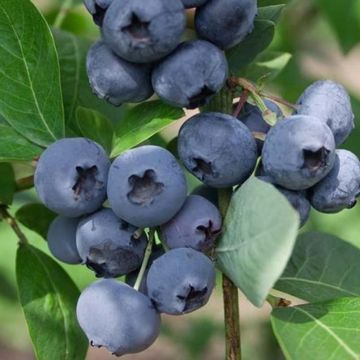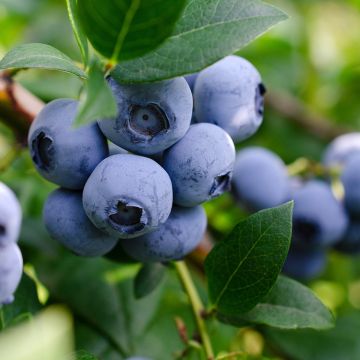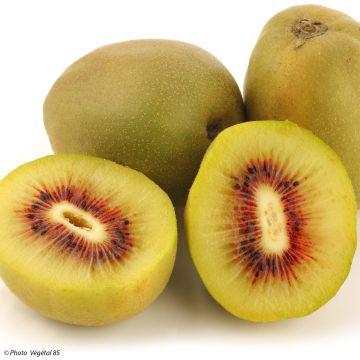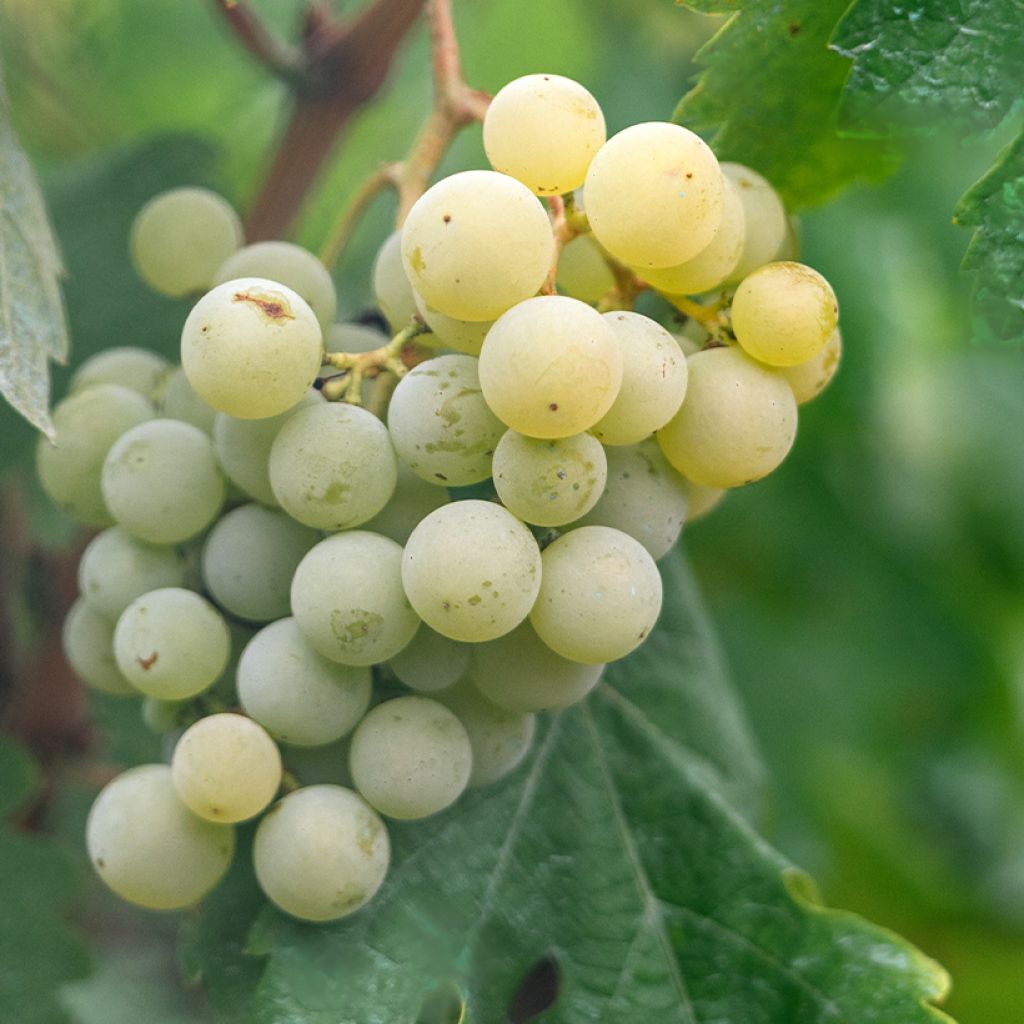

Vitis labrusca x vinifera Topazia - Dessert Grape
Vitis labrusca x vinifera Topazia - Dessert Grape
Vitis labrusca x vinifera Topazia
Fox Grape, Grapevine, Common Grape Vine, European Grape, Wine Grape
Special offer!
Receive a €20 voucher for any order over €90 (excluding delivery costs, credit notes, and plastic-free options)!
1- Add your favorite plants to your cart.
2- Once you have reached €90, confirm your order (you can even choose the delivery date!).
3- As soon as your order is shipped, you will receive an email containing your voucher code, valid for 3 months (90 days).
Your voucher is unique and can only be used once, for any order with a minimum value of €20, excluding delivery costs.
Can be combined with other current offers, non-divisible and non-refundable.
Home or relay delivery (depending on size and destination)
Schedule delivery date,
and select date in basket
This plant carries a 6 months recovery warranty
More information
We guarantee the quality of our plants for a full growing cycle, and will replace at our expense any plant that fails to recover under normal climatic and planting conditions.
Description
The 'Topazia' table grapevine is a recent hybrid variety that stands out for its great natural resistance to diseases, "white" seedless grapes with a delicious wild strawberry aroma, and particularly early fruit ripening. This vine produces moderately sized clusters abundantly every year. This vine requires little maintenance, except for pruning in late winter. It can be grown in the garden, on a pergola or arbour, or trained against a wall. It can also be cultivated in a large container on the terrace!
Vitis 'Topazia' is a horticultural selection belonging to the 'Fragola' grape group. These are hybrids of Vitis labrusca and Vitis vinifera with uncertain origins. Their flagship variety, the strawberry grape 'Fragola Nera', is likely the result of a spontaneous cross-breeding that occurred in the United States during the trials of European grape varieties. It seems that the arrival of phylloxera, which decimated the European vineyards at the end of the 19th century, can be attributed to these resistant hybrids imported to the old continent for winemaking. However, their grapes produce more toxic methanol during the fermentation process, and their winemaking has been prohibited. On the other hand, it is these molecules that give the 'Fragola' type grape its typical strawberry aroma. The 'Fragola' grape varieties were on the verge of disappearing from cultivation. But their exceptional aromatic flavour allowed these vines to continue to be cultivated for table grape harvest. All grapevines belong to the Vitaceae family.
Vitis 'Topazia' is a sarmentous, climbing shrub, whose twisting stems with tendrils can exceed 5m in length over time. It forms a trunk, often knotty and twisted, covered with fibrous, reddish-brown bark that flakes off in strips as it ages. Its long green stems bear beautiful round, medium green leaves, with toothed edges, hairy on the underside, turning yellow before falling in autumn. It blooms in late spring, from May to June depending on the region, in the form of dense and well-formed pyramidal to cylindrical clusters, loaded with tiny nectar-rich green flowers. After pollination by insects, the berries we call grapes are formed.
The 'Topazia' grapevine produces moderately sized to small pyramidal (between 200 and 300 grams), somewhat loose clusters, composed of round, medium size, yellow-green grapes. Their pulp is juicy and seedless, with a typical wild strawberry aroma.
The 'Topazia' strawberry grape is very hardy and easy to grow in any well-drained garden soil, ideal for beginner gardeners or organic cultivation. The vigorous plant is pruned in late winter, after the frost, above 3 buds (buds) to promote the formation of new shoots that will flower. When planted in full sun, it will be very decorative along a wall, on an arbour, a pergola, in the ground, or in a large container on a terrace, sheltered from strong winds.
Plant habit
Fruit
Flowering
Foliage
Botanical data
Vitis
labrusca x vinifera
Topazia
Vitaceae
Fox Grape, Grapevine, Common Grape Vine, European Grape, Wine Grape
Vitis Fragola Bianca Apirena
Cultivar or hybrid
Other Grapevines
View all →Planting and care
The 'Topazia' Vine should be planted in a regular, but well-drained, fertile and moist soil, which you will have enriched with an organic fertiliser. Once well established, the vine is quite resistant to summer drought. Choose a full sun exposure, possibly partial shade in the south (southeast exposure). It can withstand temperatures as low as -20°C. Prune it in February-March, after the frost, leaving 2 or 3 buds on the secondary branches. Prune it again once the berries have formed on the clusters, leaving 2 or 3 leaves above each cluster (this allows the sun to reach the fruits and the sap to feed them more efficiently). Once the framework of your trellis is formed, remove every year the branches that have produced fruits. Stake or train to support and guide the branches. Train it against a wall to easily access the grapes. Powdery mildew and mildew are common (especially in rainy climates), which is why the vine should be treated as a precaution in spring and during summer, with Bordeaux mixture and/or flowers of sulfur. This vine may take a season to establish well, during which it will grow moderately. Its woody climbing stems will then gain several metres per year and will require pruning.
Planting period
Intended location
Care
Planting & care advice
This item has not been reviewed yet - be the first to leave a review about it.
Similar products
Haven't found what you were looking for?
Hardiness is the lowest winter temperature a plant can endure without suffering serious damage or even dying. However, hardiness is affected by location (a sheltered area, such as a patio), protection (winter cover) and soil type (hardiness is improved by well-drained soil).

Photo Sharing Terms & Conditions
In order to encourage gardeners to interact and share their experiences, Promesse de fleurs offers various media enabling content to be uploaded onto its Site - in particular via the ‘Photo sharing’ module.
The User agrees to refrain from:
- Posting any content that is illegal, prejudicial, insulting, racist, inciteful to hatred, revisionist, contrary to public decency, that infringes on privacy or on the privacy rights of third parties, in particular the publicity rights of persons and goods, intellectual property rights, or the right to privacy.
- Submitting content on behalf of a third party;
- Impersonate the identity of a third party and/or publish any personal information about a third party;
In general, the User undertakes to refrain from any unethical behaviour.
All Content (in particular text, comments, files, images, photos, videos, creative works, etc.), which may be subject to property or intellectual property rights, image or other private rights, shall remain the property of the User, subject to the limited rights granted by the terms of the licence granted by Promesse de fleurs as stated below. Users are at liberty to publish or not to publish such Content on the Site, notably via the ‘Photo Sharing’ facility, and accept that this Content shall be made public and freely accessible, notably on the Internet.
Users further acknowledge, undertake to have ,and guarantee that they hold all necessary rights and permissions to publish such material on the Site, in particular with regard to the legislation in force pertaining to any privacy, property, intellectual property, image, or contractual rights, or rights of any other nature. By publishing such Content on the Site, Users acknowledge accepting full liability as publishers of the Content within the meaning of the law, and grant Promesse de fleurs, free of charge, an inclusive, worldwide licence for the said Content for the entire duration of its publication, including all reproduction, representation, up/downloading, displaying, performing, transmission, and storage rights.
Users also grant permission for their name to be linked to the Content and accept that this link may not always be made available.
By engaging in posting material, Users consent to their Content becoming automatically accessible on the Internet, in particular on other sites and/or blogs and/or web pages of the Promesse de fleurs site, including in particular social pages and the Promesse de fleurs catalogue.
Users may secure the removal of entrusted content free of charge by issuing a simple request via our contact form.
The flowering period indicated on our website applies to countries and regions located in USDA zone 8 (France, the United Kingdom, Ireland, the Netherlands, etc.)
It will vary according to where you live:
- In zones 9 to 10 (Italy, Spain, Greece, etc.), flowering will occur about 2 to 4 weeks earlier.
- In zones 6 to 7 (Germany, Poland, Slovenia, and lower mountainous regions), flowering will be delayed by 2 to 3 weeks.
- In zone 5 (Central Europe, Scandinavia), blooming will be delayed by 3 to 5 weeks.
In temperate climates, pruning of spring-flowering shrubs (forsythia, spireas, etc.) should be done just after flowering.
Pruning of summer-flowering shrubs (Indian Lilac, Perovskia, etc.) can be done in winter or spring.
In cold regions as well as with frost-sensitive plants, avoid pruning too early when severe frosts may still occur.
The planting period indicated on our website applies to countries and regions located in USDA zone 8 (France, United Kingdom, Ireland, Netherlands).
It will vary according to where you live:
- In Mediterranean zones (Marseille, Madrid, Milan, etc.), autumn and winter are the best planting periods.
- In continental zones (Strasbourg, Munich, Vienna, etc.), delay planting by 2 to 3 weeks in spring and bring it forward by 2 to 4 weeks in autumn.
- In mountainous regions (the Alps, Pyrenees, Carpathians, etc.), it is best to plant in late spring (May-June) or late summer (August-September).
The harvesting period indicated on our website applies to countries and regions in USDA zone 8 (France, England, Ireland, the Netherlands).
In colder areas (Scandinavia, Poland, Austria...) fruit and vegetable harvests are likely to be delayed by 3-4 weeks.
In warmer areas (Italy, Spain, Greece, etc.), harvesting will probably take place earlier, depending on weather conditions.
The sowing periods indicated on our website apply to countries and regions within USDA Zone 8 (France, UK, Ireland, Netherlands).
In colder areas (Scandinavia, Poland, Austria...), delay any outdoor sowing by 3-4 weeks, or sow under glass.
In warmer climes (Italy, Spain, Greece, etc.), bring outdoor sowing forward by a few weeks.






























